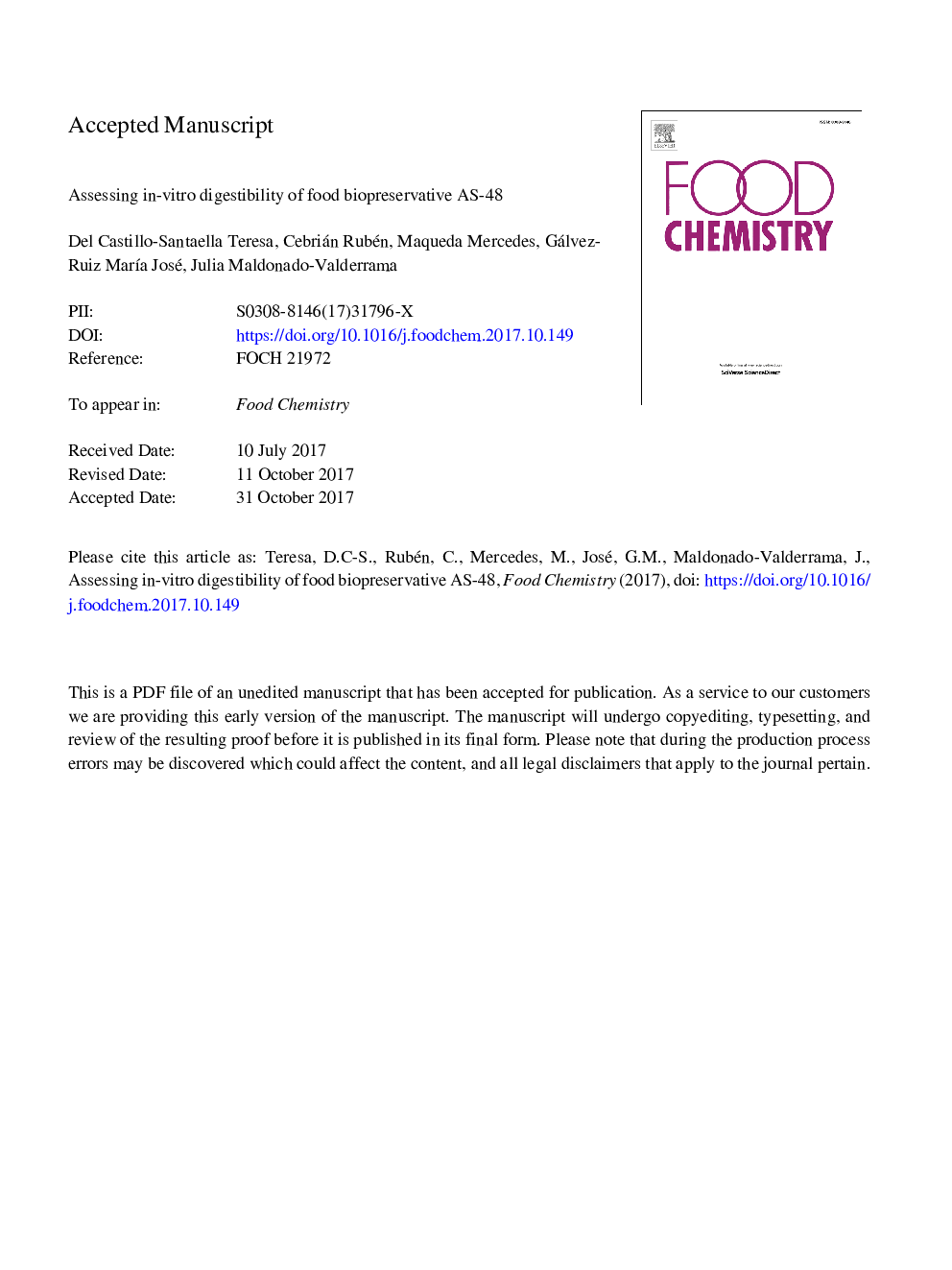| Article ID | Journal | Published Year | Pages | File Type |
|---|---|---|---|---|
| 7586171 | Food Chemistry | 2018 | 23 Pages |
Abstract
AS-48 is a bacteriocin with potential application as food biopreservative. In order to optimize its use for oral consumption, we assess the impact of gastrointestinal digestion, both in bulk and adsorbed at the air-water interface. Analysis of AS-48 digestion fragments in bulk by SDS-PAGE, RP-HPLC, and MALDI-TOF proves that the previous pepsin exposition promotes digestion by trypsin/chymotrypsin by exposing new cleavage sites. Regarding adsorbed AS-48, the in vitro digestion profile shows that the conformational change undergone by AS-48 upon adsorption affects its digestibility. Gastrointestinal enzymes cleave only susceptible residues, which are oriented into the aqueous phase, while hydrophobic susceptible residues remain undigested. Evaluation of the elasticity of the adsorbed layer confirms also the presence of undigested AS-48. These results are important towards the use of AS-48 in food formulations; assuring that some intact AS-48 resists digestion guarantees its antibacterial activity throughout the gastrointestinal tract.
Keywords
Related Topics
Physical Sciences and Engineering
Chemistry
Analytical Chemistry
Authors
Teresa del Castillo-Santaella, Rubén Cebrián, Mercedes Maqueda, M. Jose Gálvez-Ruiz, Julia Maldonado-Valderrama,
